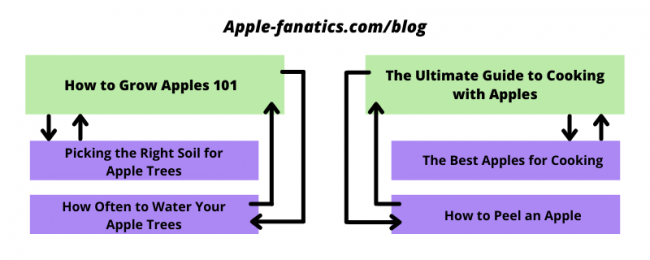Pillar Pages
Contents
Pillar pages
A pillar page is a web page containing a piece of long-form content that covers a broad topic in its entirety or another piece of staple content. They are commonly used to link to content on more specific topics within this broader topic, which in turn also link back to the pillar page. A pillar page is commonly used to organize blog content into groups, known as ‘topic clusters’, making it easier for readers to get the information they are looking for and improving the user experience on the blog.
There are three main types of pillar pages, namely 10X content pillar pages, product/service pillar pages, and resource pillar pages. Resource pillar pages and product/service pillar pages focus on creating an overview of resources and an overview of products/services respectively. 10X content pillar pages focus on marketing content and are what we’ve focused on in this article.
The history of pillar pages
The term “pillar page” was made popular by HubSpot in 2017, but even before then, many SEO’s & marketing experts were talking about similar content structures. Things like “cornerstone content” and “skyscraper content” were all variations of pillar pages, with slight differences in how these pages were portrayed and set up.
The main difference when it comes to a pillar page is that the long-form page becomes a central hub, with pages on related topics surrounding it and interlinking between them. The relevance of this structure seems to have changed since Google started leveraging artificial intelligence (AI) to better understand pages on the web, as well as them placing more focus on user metrics. This led to usability and structure becoming more important.
Long-form content & topic clusters
Long-form content is content that covers a topic in its entirety, often resulting in very long pages that cover a broad topic. Since this content often doesn’t go into immense detail on each sub-topic, related pages, which often do go into great detail on these sub-topics, make it easier for readers to find more information. This forms topic clusters, with the detailed sub-topic posts linking to the pillar post, and the pillar post linking to each of the sub-topic posts.
A topic cluster is simply a group of blog posts that cover the same main topic. It has a central pillar post that covers the overarching topic in its entirety, and surrounding posts that cover the sub-topics.
For example, a pillar post titled “The Ultimate Guide to Optimizing your Content for SEO” may have surrounding posts like “What are the Best Keyword Research Tools,” “Optimizing your Content for your Marketing Goals,” and “How to write SEO-optimized Titles.”

Figure: An example of pillar pages in green linking to various pages, with those pages linking back to the pillar pages. This demonstrates two topic clusters.
Why do pillar pages exist?
Pillar pages help to keep content organized and allows readers to find the information they are looking for as easily as possible. By following the structure of pillar pages and surrounding sub-topic pages, you prevent posts from getting too long and ensure browsing the site is as easy as possible. Along with benefits to the user experience, there are also some SEO and marketing benefits.
What are the SEO benefits?
The main marketing and SEO benefit that pillar pages offer is to enhance the user experience. An improved user experience is beneficial for SEO, since it improves the average number of page views per user, dwell time, and various other user metrics. However, there are also some direct SEO benefits that pillar pages offer.
One of the main benefits is that pillar pages make it easy to create more relevant internal links. Links are important for SEO, however, many SEO’s and webmasters tend to neglect internal linking. Working with pillar pages makes it easier to add an adequate number of relevant internal links, helping users move through your site and carrying link juice.
Another benefit when working with pillar pages is that it prevents orphan pages from occurring. Orphan pages are almost always wasted when they occur by accident, often getting low traffic and rankings due to poor indexation, so preventing this from happening is an important part of SEO.
One last benefit has to do with topical relevance and AI. Since your pages are clearly ordered around specific topics, many SEO’s believe this helps search engines understand your site and the different pages on it. Since the relevance of a page is an important ranking factor, ensuring clarity on what your page is about is one of the most important factors in SEO.
Related links
- https://www.bluefrogdm.com/blog/your-ultimate-pillar-page-development-guide
- https://contentmarketinginstitute.com/2019/10/content-pillar-pages/